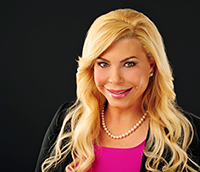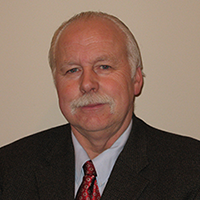By / Julie A. Muller, Esq. • Executive Vice-President, SMACNA-Western Washington

As we say goodbye to 2020 and prepare to welcome a new year full of hope and opportunity, we must also accept that things will never quite be the same. There were lessons to be learned in 2020, and I have no doubt our skilled member contractors took the opportunity to learn and grow and implement new efficiencies that will continue to benefit their operations for the forseeable future.
One element of pandemic adaptation that is unlikely to change is the use of remote technologies for managing teams. It’s true, face to face is the best way to foster and maintain relationships and as soon as we can, our members will come back to face to face when necessary. But to be realistic, this isn’t always needed. In some cases a quick Zoom or Meetings connection will be enough, and in those cases it will require new leadership skills to make those interactions meaningful and productive. We will need to be inspiring and engaging in new, holistic ways. We will have to learn to ask the right questions and relay the right feedback to keep remote teams productive, connected, and healthy. Here are five tips for doing just that:
- Stay on topic: the best way to avoid wandering minds and keep people engaged online (and in person) is to stay on task. Avoid digressions and side chatter, and make it clear from the onset that the mission is to stay on task. When developing the topic for the meeting make sure it includes in its scope the positive effect that your company is having on the greater world. If you are discussing project logistics, for example, talk scheduling and materials but also look at how the client is benefitting from your company and workforce and what your crews can do to add value.
- Give feedback: It doesn’t come naturally to everyone, but feedback is essential when managing remote teams. People need to hear from you about the good and the bad, and they need that feedback to be direct and frequent. If spoken works aren’t your forte, think about a quick text or email. Make sure positive feedback is clear and honest—no blowing smoke—and corrective feedback should be detailed and solutions-focused.
- Reflect your company in the meetings: Much is lost when things go online—body language, group chatter, gathering in communal areas—but that doesn’t mean the meeting can’t reflect your company’s individual identity or culture. If weekly shoutouts are your thing, keep that up at the beginning of an online meeting. If checking in or idea sharing are typical in your office, make sure you do it online, too. This lingering flavour of your business will bring people together.
- Empower your teams: Working from home can be unsettling for some leaders who like to see what their teams are up to, check in regularly, and ensure things are running smoothly. This is fine, of course—company messengers are great for quick questions and check-ins—but avoid the urge to micromanage remote teams. It is true, some people may take 45 minutes lunch instead of 30, but if that extra 15 makes them 30% more productive throughout the day, that is a win. Trust employees and evaluate their performance from a deliverables perspective. What you see when people manage their own productivity and self-care might surprise you.
- Take breaks: As important as hard work are regular breaks. Working online is exhausting for the posture, the eyes, the repetitiveness, the lack of real contact… remember that teams with regular breaks, exercise, and healthy diets outperform their overworked, less healthy counterparts by leaps and bounds. Besides, hearing you encourage them to look after themselves shows you care and enhances retention.
I recently completed Excuse-proof/Goal-crushing Leaders and Teams training from Aspirational Catalyst, which focuses on ways to correct performance management programs and initiatives that are failing their organizations and employees. Successful leaders move away from focusing on weaknesses or “areas of development” and redirecting to focus on performance strengths with teams, which greatly improves their success.
My biggest takeaway was that as leaders, especially during review time, we tend to focus on what our employees need to improve. Instead, this training encourages us to realign responsibilities within our staff and really focus on what everyone is good at, creating a more effective and efficient team.
We are going to bring this training to our members in 2021. ▪



